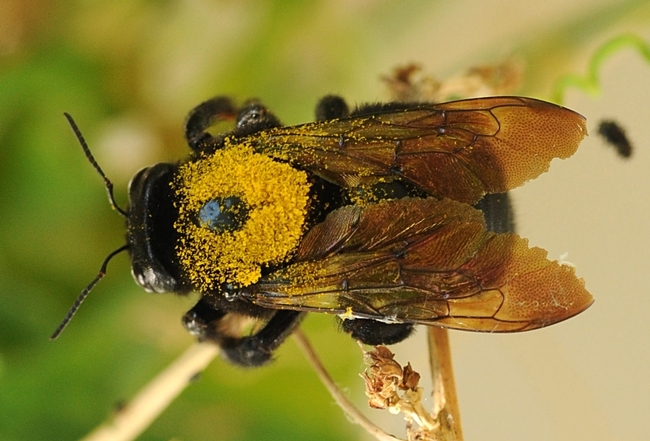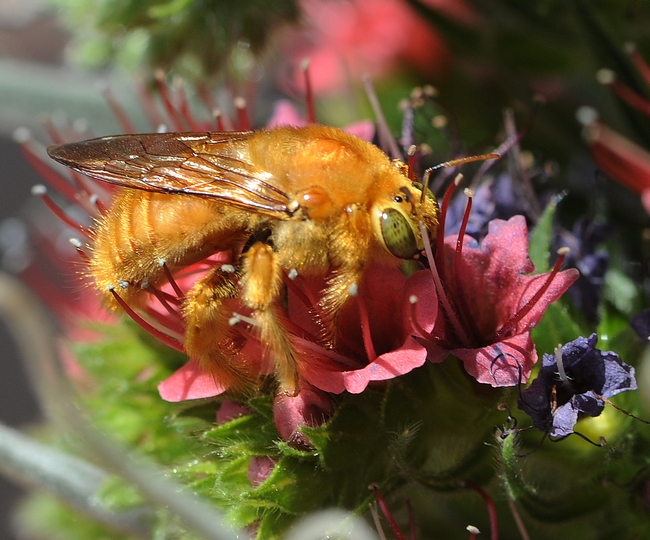
Carpenter bees (Xylocopa spp.) look like bumble bees. The largest in California are the Central Valley carpenter bees (X. tabaniformis orpifex), more than an inch long. The females are solid black, but the males are golden-blond. The males are sometimes nicknamed “teddy bears” because of their soft, burly, and fuzzy appearance. (See the three California species at http://entomology.ucdavis.edu/news/valleycarpenterbees.html).
Carpenter bees nest in soft wood and pithy stems of plants. Nests usually consist of tunnels half of an inch in diameter and 6-to-10 inches deep and may include several brood chambers. Carpenter bees may buzz like saws when constructing nests (hence their name), but they do not eat the wood. Instead, they forage on flowering plants, feeding on nectar, with the females collecting pollen for their offspring. When they have a sufficient plug of pollen in a chamber, females lay an egg on it, and then seal the chamber with woodchips. Another plug of pollen is then added for numerous chambers per tunnel. Development from egg to larva to adult may take about three months. Carpenter bees overwinter as adults, often in old tunnels. There is only one generation a year.
Like other native bees, carpenter bees are important pollinators in native plant communities, gardens, and in some crops. As they visit flowers and feed on nectar, they pick up and transfer pollen. We depend on insect pollination for a third of our food, including fruits and vegetables, nuts (almonds) and seed crops. Insect pollinators such as honey bees contribute a value of around $29 billion to our agricultural industry with about 15 percent of this value coming from native bees like the carpenter bees. Insect pollinators are also important for pollinating wild plants, contributing a food source for birds and other wildlife.
Some people consider carpenter bees pests because they drill holes or nest in wooden structures. However, their contribution to pollination far outweighs any damage to structures, according to native pollinator specialist Robbin Thorp, emeritus professor of entomology at UC Davis. Unlike the eastern carpenter bee species, which can be damaging to wooden structures, our Central Valley carpenter bees choose softer substrates for their nests such as pithy stems of plants, old logs, and untreated redwood. Using untreated, unpainted redwood for arbors, fences and patio or lawn furniture in this area means learning to share with carpenter bees.
So, before getting out your bottle of insecticide spray for controlling carpenter bees, or plugging their nesting holes, think again about their benefits. Thorp considers the use of any pesticides in the hands of untrained homeowners to be a greater risk to their health and safety than carpenter bees ever will be. Carpenter bees nest in his wisteria-covered arbor and he is most happy to live with them.
With a decline in bee pollinators due to diseases, pests, pesticides, stress, and malnutrition, enjoy the presence of these flashy bees, as they are important pollinators.
